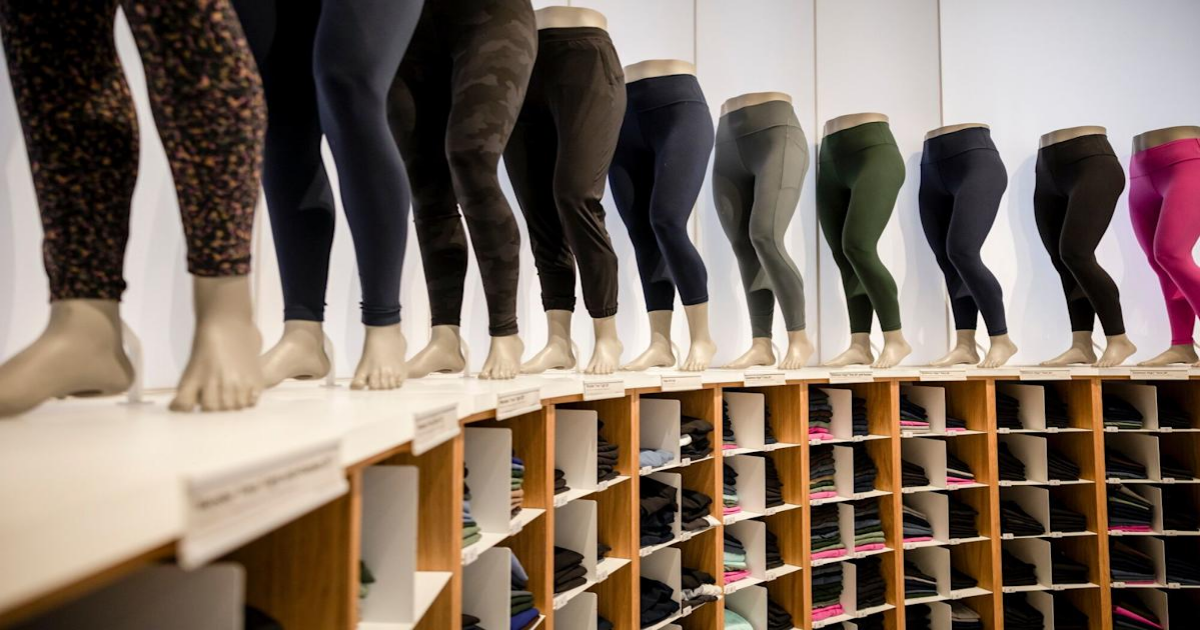(Bloomberg) — TikTok users in the US are being inundated with videos from Chinese influencers encouraging American buyers to overcome punitive Trump tariffs by buying direct from the “world’s factory” — China.
Most Read from Bloomberg
Mostly filmed at Chinese factories purporting to supply top US brands from Lululemon Athletica Inc. to Nike Inc., the influencers aim to “expose” how the vast majority of consumer goods are made in the world’s second-largest economy. Many of them provide website URLs and contact details for viewers to order directly from these suppliers. “Why don’t you just contact us and buy from us? You won’t believe the prices we give you,” said one creator selling luxury handbags.
In another video, TikTok creator @LunaSourcingChina, stands outside a factory she says makes Lululemon yoga leggings for $5 to $6 even though they retail in the US for more than $100. “The material and craftsmanship are basically the same,” she says.
A Lululemon spokesperson said the company manufactures about 3% of its finished goods in Mainland China and that authentic products are only available for purchase at Lululemon stores, official websites and authorized partners.
Some of the most popular videos – many uploaded in March but only gaining traction in recent days – have been amplified by a video titled “China exposed the truth” with 8.3 million views and 492,000 likes, as of Monday morning, New York time. The one that reveals the Chinese supplier to Lululemon garnered 2.6 million views and over 215,000 likes, while a “How we bypass tariffs” clip had close to 1 million views and 118,000 likes.
“This campaign appears to be a calculated attempt to undermine President Trump’s tariff policy on China by leveraging TikTok to promote Chinese manufacturing as cheaper, more desirable, and accessible—even in defiance of trade restrictions,” said Alex Goldenberg, senior advisor at the Network Contagion Research Institute at Rutgers University.
While it’s unclear how ordering directly from Chinese suppliers would allow consumers to sidestep the tariff — the duty waiver for small parcels that are sent to American homes is also being scrapped from May 2 — the videos are aimed at undermining the White House narrative that the economic measures are in Americans’ interest.
The levy on Chinese exports is now 145%, while Trump has paused additional tariffs on other countries for 90 days.
The flood of posts also reflects the increased effectiveness of Chinese creators at reaching into the daily lives of ordinary Americans. TikTok’s algorithm, and its ability to influence what information millions of US users see, is one of the main driving forces behind US government efforts to force its Chinese owner ByteDance Ltd. to relinquish control of its international operations. TikTok didn’t immediately respond to a request for comment.
Other Chinese social media apps like Xiaohongshu, or Red Note, have also gained popularity among young US users amid uncertainty around access to TikTok.
“These posts are much more confrontational and mocking of the US, rather than showing it as a threat,” said Tom Harper, lecturer in Chinese international relations at the University of East London. They follow a wave of AI-generated images depicting Americans working on assembly lines, Harper added.
Some of the videos directly criticize US trade policies and call on American citizens to take action.
“For decades your government and oligarchs ship your jobs to China, not for diplomacy, not for peace, but to exploit cheap labor and in the process, they hollow out your middle class, crash your working class and told you to be proud while they sold your future for profit,” user @neil778027 said in a video. “Americans, you don’t need a tariff, you need a revolution.”
On Friday, the US announced tariff exemptions on a range of Chinese products including electronics, computers and semiconductors, although it’s not known how long these exceptions will apply. Regardless, they will not affect most of the goods exported by China to the US, including the clothing and accessories produced by Chinese suppliers featured in the TikTok videos.
Many European high-end luxury brands are also featured, but the makers of the videos don’t explain why they are featuring European brands in their pushback against the US.
Another key question raised by the videos is whether the factories have non-disclosure agreements with their international clients and how the videos will potentially affect long-standing business relationships between brands and their manufacturers.
Cameron Johnson, senior partner at Shanghai-based consultancy Tidalwave Solutions, who recently visited the Chinese trading hub of Yiwu, sees it as part of a fundamental shift in purchasing practices for China.
“In the past, you might use a middleman or a trading company to source your products for your deal with quality control or go visit the factory, establish those relationships, and then maybe you would come on occasion,” he told Bloomberg TV. “But now what we’re seeing is just a complete democratization of sourcing products.”
–With assistance from Annabelle Droulers, Daniela Wei, Zheping Huang and Omar El Chmouri.
(Adds comment in seventh paragraph.)
Most Read from Bloomberg Businessweek
©2025 Bloomberg L.P.
